Damage to the spinal structures plays an important role among the causes of leg weakness. Compression of nerve roots is caused by osteophytes in osteochondrosis, intervertebral fractures and damaged vertebral bodies as a result of osteoporosis, tuberculosis or a metastatic process. This situation occurs with spondyloarthritis, spondylolisthesis (dislocation of vertebral segments).
- Pain in the calves
- Which doctor should be consulted?
- Possible diseases.
- Make an Appointment with a Podiatrist You can make an appointment by phone
- diagnosis
- Treatment
- Care before diagnosis
- Conservative therapy
- First aid for leg pain below the knees
- What to do if leg muscles hurt?
- How do you treat leg cramps?
- Features of treatment
- Arterial diseases
- Atherosclerosis of the arteries of the lower limbs
- vein diseases
- Varicose veins of the lower limbs
- phlebitis and thrombophlebitis
- Why it hurts
- How to find out what the cause is
- Specificity of diagnosis
- Treatment of foot pain
- Our doctors
- norms
Pain in the calves
Calf pain is a common symptom that occurs after prolonged and intense physical activity or may indicate a serious illness. If cramps, burning in the legs and discomfort have been bothering you for a long time, it is important to see a doctor so that the pain can be eliminated so that the affected person can enjoy life to the fullest again.
Calf pain can be caused by the following conditions:
- Varicose veins and acute thrombophlebitis cause severe pain in the calf muscles, leading to swelling and a feeling of heaviness in the legs.
- Torn ligaments and gradual destruction of the arteries due to insufficient supply of nutrients and oxygen to the tendon tissue.
- Myositis of the leg muscles is accompanied by a pulling or aching pain syndrome with movement, which increases when walking, and causes facial swelling, nausea, diarrhea and fever.
- Neuritis and polyneuritis are characterized by episodes of severe pain that spread along the affected nerve, leading to numbness and trophic ulcers.
- Osteochondrosis and osteoarthritis can cause rebound pain in the leg muscles.
- Atherosclerosis, joint syndrome, acute artery occlusion caused by sudden interruption of blood flow in a painful joint.
- Diabetic foot, which is characterized by redness and damage to the surface of the skin.
- Injuries to the bone.
Which doctor should be consulted?
To recognize the pathology and initiate treatment, a meaningful diagnosis and professional assessment by a doctor is required. In order to determine the cause of the leg pain, the doctor first carries out an initial examination and takes the medical history. The most common causes of pain and heaviness in the calves are usually venous diseases, inflammatory processes in the muscles and excessive physical activity. Such symptoms can be a warning sign. If you make an appointment with your family doctor, depending on the disease diagnosed, he will recommend examinations and refer you to the following specialists: phlebologist, orthopedist, neurologist, osteopath, rehabilitation therapist, vertebrologist, reflexologist, traumatologist, massage therapist, chiropractor, surgeon.
The doctor can use clinical blood and urine tests as well as functional diagnostic procedures to make the diagnosis:
- Ultrasound examination (USG) of the arteries and veins of the legs;
- X-rays;
- duplex scans;
- Check-up – a comprehensive examination of the body;
- Computed tomography (CT)
- magnetic resonance imaging (MRI);
- electroneuromyography.
In our medical center we offer the following examinations:
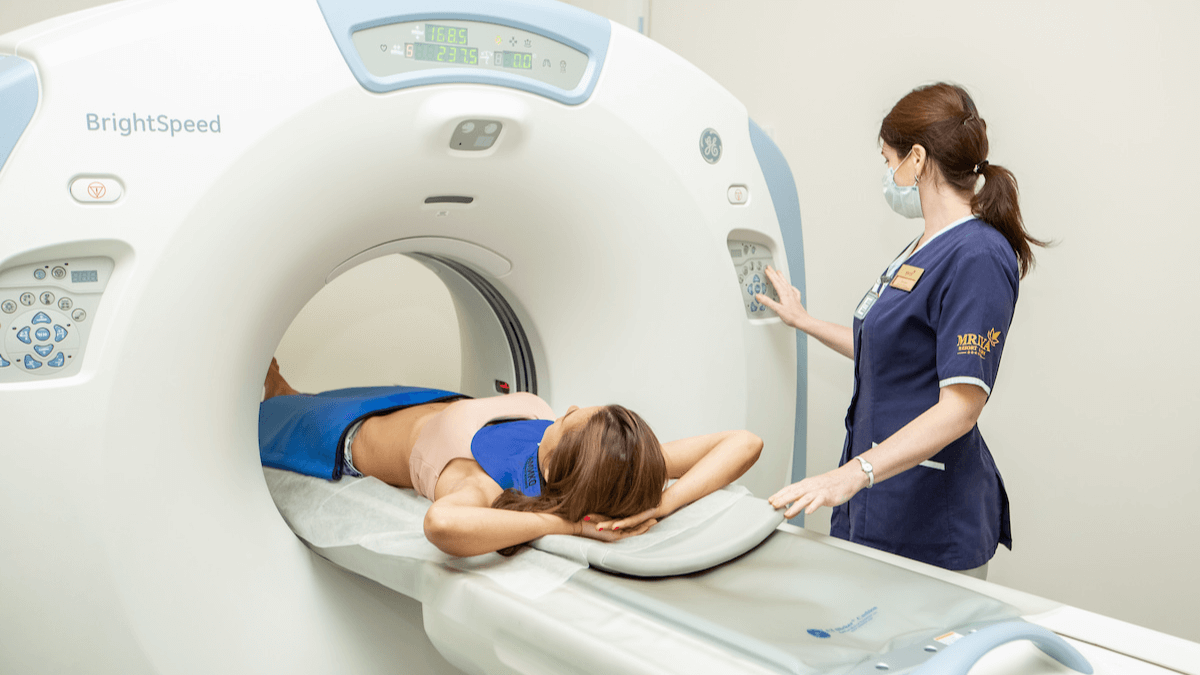
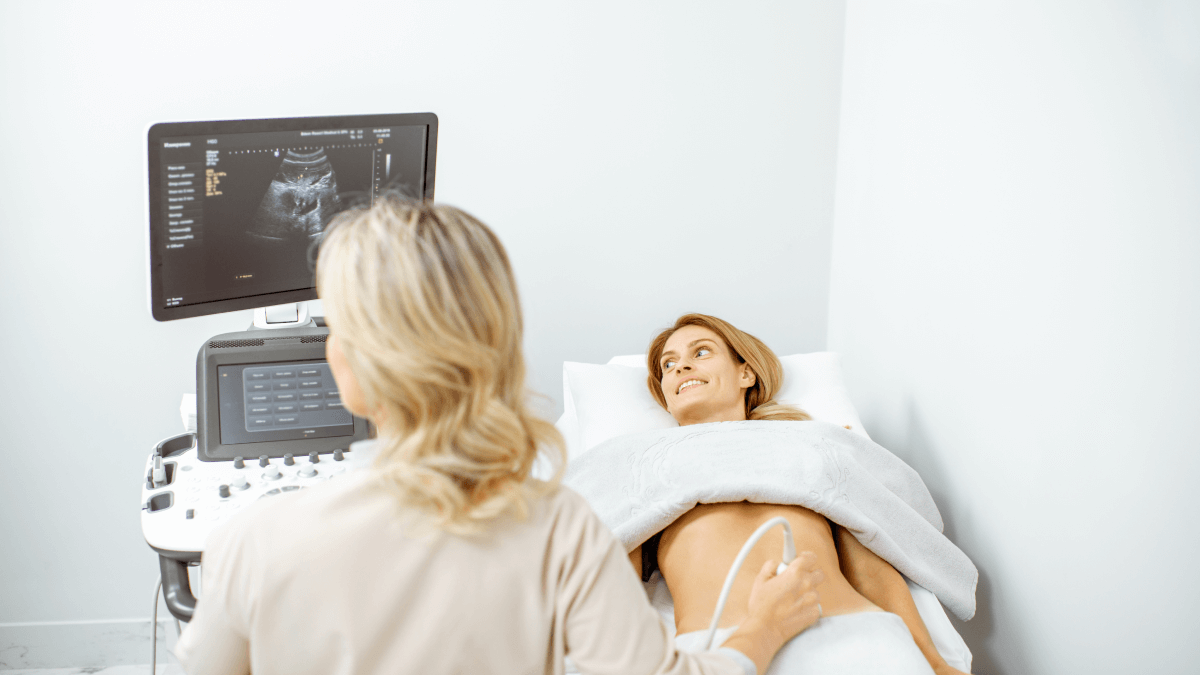
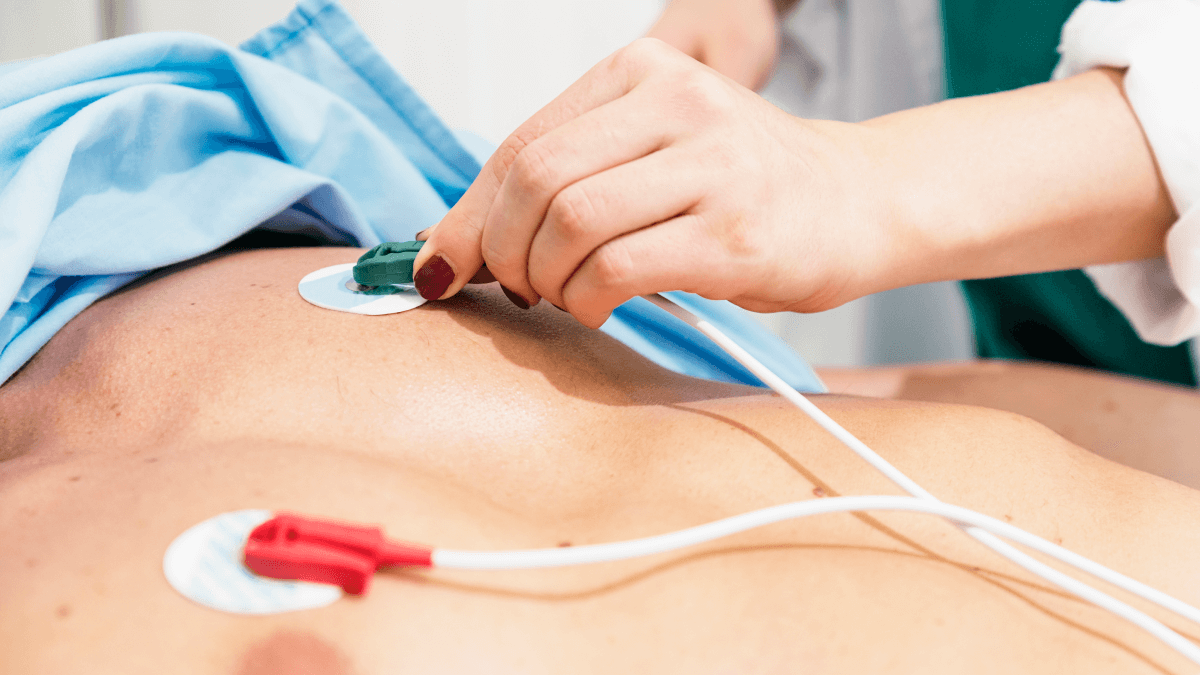

Possible diseases.
- In some cases, leg pain is normal. If they occur due to excessive exertion, you should train accordingly. A magnesium and/or calcium deficiency prevents muscles from contracting properly, resulting in pain.
- An inflammatory process that affects the veins is phlebitis. It is often associated with the formation of blood clots – thrombophlebitis. When a vein is blocked, blood pools in it and presses on the vein walls. The same mechanism applies to varicose veins.
- The new growth may block the outside of the vein. The blood pools in the vein and causes pain.
- A nerve impulse from the spinal cord is sent to work in the legs. If this fiber is damaged or compressed by the tumor, it can cause pain or numbness in the limb.
Pain in some joints indicates inflammation, inadequate production of synovial fluid, or joint destruction.
Arrange one
Appointment with a podiatrist
You can make an appointment by phone
or make an appointment online
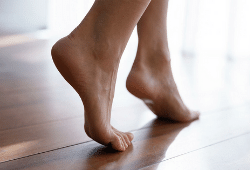
To make a diagnosis, the pain must be observed. They note the regularity, timing and location of the pain and when it improves. You should report your observations to your doctor at your appointment. For the first visit, a visit to your family doctor is sufficient. He or she will order an examination, based on which the patient can be referred to a specialized doctor.
- Face to face examination.
- Biochemical blood test for magnesium and calcium.
- Ultrasound examination of the veins in the lower limbs.
- If you have joint pain, an ultrasound scan is performed.
Once the results are available, the doctor must be consulted again to determine treatment options or refer the patient to a specialist: phlebologist, vascular surgeon, rheumatologist or neurologist.
diagnosis
The results of the clinical examination, supported by the results of additional methods, help to understand which disease caused the leg weakness. The list of diagnostic procedures is determined by the neurologist based on the information from the patient's medical history and neurological examination. The following tests can be performed:
- blood tests. A hemogram examines the number of red blood cells, the leukocyte pattern and the erythrocyte sedimentation rate. Biochemical analysis provides information about endocrine or electrolytic abnormalities, muscle enzymes and specific antibodies.
- X-ray examination. The condition of the bony structures of the spine and skull can be assessed using x-rays in two projections. However, this examination has a low resolution and does not visualize soft tissue injuries.
- Computed Tomography. CT is the preferred method for imaging recent strokes, tumors, hematomas, and fractures of the posterior cranial fossa. Diffuse pathologies of the spinal cord and brain substance can be better recognized with MRI.
- myelography. The permeability of the cervical canal is clarified by introducing a radiopaque contrast medium into the subarachnoid space. Myelography is indicated for intervertebral fractures, spinal injuries and tumors.
- electroneuromyography. Diseases that are associated with nerve conduction disorders are diagnosed using ENMG. During this test, the peripheral nerve is stimulated with electrical impulses and the muscle response is recorded.
Ultrasonic angioscopy and reovoscopy are used to detect vascular diseases. With endocrinopathies, an ultrasound examination of the thyroid, parathyroid and adrenal glands is required, and with myasthenia gravis, the size of the thymus is examined. Hereditary diseases are diagnosed on the basis of cytogenetic, molecular genetic tests.

Treatment
Care before diagnosis
Acute lower limb weakness is most commonly caused by stroke and trauma. Urgent measures for vascular insufficiency include intubation of a ventilator, stabilization of blood pressure, and treatment of cerebral edema. Cerebroprotective measures are used in the treatment of undifferentiated stroke. Suspected spinal cord injury requires immobilization of the cervical spine and transport on a rigid stretcher.
Conservative therapy
Treatment of leg muscle weakness is aimed at eliminating the cause and pathological mechanisms involved in its development. Medications from different groups are used to treat acute conditions and to support the correction of chronic diseases. The following medications have a pathogenetic basis for reduced strength in the limbs:
- Neuroprotectants. They are used to minimize the negative effects on neurons and protect them from damage. Antioxidants (Mexodol, lipoic acid), vasoactive substances (nimodipine, vinpocetine), nootropics (Piracetam) have such properties.
- Immunocorrectors. Diseases of autoimmune origin are treated with cytostatic drugs (methotrexate, azathioprine, cyclosporine), immunoglobulins and glucocorticoids. Steroids are indicated as anti-inflammatory agents, membrane stabilizers and in the replacement therapy of Addison's disease.
- Detoxifying agents. The binding and excretion of toxic substances is ensured by complexing agents (unitiol, sodium thiosulfate, tetacin calcium) and infusion therapy. In severe cases, extracorporeal detoxification methods (hemosorption, plasmapheresis) are indicated.
For myasthenia gravis, anticholinesterase drugs must be prescribed, for radiculo- and vertebrogenic neuropathies with pain syndrome, NSAIDs and B vitamins are used. The rehabilitation program for patients with weakness of the lower limbs includes physiotherapy, massage and exercise therapy. Comprehensive treatment of paresis includes kinesiotherapy and orthopedic corrections.
First aid for leg pain below the knees
First aid is required if the legs hurt below the knees due to blockage of veins and arteries, as well as mechanical injuries with bleeding. These are reasons to call an ambulance immediately. The limb should be immobilized until emergency services arrive and a cold pressure bandage should be applied if bleeding occurs.
Various specialists treat structural disorders of the lower limbs. It depends on the type of pathology. If you have problems with veins and arteries, an appointment should be made with a phlebologist, with mechanical injuries with a traumatologist, with diseases of the musculoskeletal system with an orthopedist. The oncologist deals with benign and malignant tumors.
What to do if leg muscles hurt?
Pain in the legs can sometimes be resolved with simple remedies. For those who suffer from knee inflammation but want to continue training and playing sports, there are special knee pads and supports. The intensity of exercise is limited, and experts recommend avoiding deep squats, running and exercising at a moderate pace.
If the problems with the limbs are due to osteochondrosis, a corset can be worn to support the back. For pregnant women, there is a women's version that simultaneously supports the stomach and lower back. The back is much wider than the front.
If you don't have time for a full-body workout and have to work while sitting most of the time, you can do simple exercises:
- Roll from heel to toe while standing;
- rolling pencils on the floor with your feet;
- Place your feet on a footstool and pull up your socks;
- Lie on your back and swing your bent legs in the air to imitate riding a bike.
It helps to relieve the veins in the limbs and train the muscles by moving the ball from left to right and holding it with your feet.
These exercises can also be done during pregnancy, but care must be taken not to overload the abdominal muscles. Vitamin and mineral complexes containing potassium and calcium as well as vitamins may be necessary to relieve cramps.
How do you treat leg cramps?
If the main symptom is a feeling of heaviness, it can be treated with special compression underwear. These are tights, stockings and socks with a special mesh of threads that puts pressure on the muscles of the limbs and increases venous outflow and maintains the tension of the blood vessels. Compression underwear varies in elasticity and should therefore be selected by a phlebologist after a thorough examination.

Pregnant women can wear stockings or tights that are specifically designed for them and have a low-rise waistband that does not compress the stomach. This underwear should be worn immediately after waking up. At this point, the degree of filling of the veins with blood is minimal. Tights or stockings are worn throughout the day.
By applying a certain amount of pressure to the vessels, the swelling in the shins decreases and the feeling of heaviness disappears. This treatment does not help get rid of varicose veins, but it can halt their progression and give time to prepare for more serious treatment.
Features of treatment
Choosing a treatment plan for calf pain depends on the cause of the problem. In most cases, surgery is not necessary and conservative measures such as medication, physical therapy, and physical therapy may be sufficient. These measures contribute to:
- to improve blood circulation;
- to suppress inflammatory processes;
- eliminate pain and swelling;
- flush out toxins;
- Strengthening of ligaments and muscles.
It is dangerous to self-administer medications and other therapeutic agents. For example, heparin-based drugs are prescribed for thrombosis, but if blood clotting is insufficient or the vascular walls are weakened, these drugs can cause bleeding. Too much exercise can damage the musculoskeletal system, while too little exercise does not have the desired therapeutic effect. For this reason, only the doctor should draw up a treatment plan that includes a series of exercises.
The Hello! clinic network has state-of-the-art diagnostic equipment that allows accurate diagnosis in the early stages of the disease. Experienced doctors develop individual treatment and rehabilitation plans for patients based on classic and modern techniques that allow them to eliminate their pain quickly, without side effects and without the risk of recurrence.
Arterial diseases
- arteriosclerosis of the lower limbs;
- Occlusive endarteritis;
- Obliterating thromboangitis;
- Arterial embolism and thrombosis.
Atherosclerosis of the arteries of the lower limbs
Among arterial diseases of the lower limbs, atherosclerosis is the most common, occurring in nearly 90 % of cases. It is classified as an obliterating vascular disease (obliterating - blocking, causing occlusion). In the past, it mainly affected older men. Unfortunately, today there is a trend towards rejuvenation of the disease, with atherosclerosis appearing already in middle age. The number of cases of obliterating atherosclerosis in women has also increased.
The risk factors are well known and include smoking, low physical activity, lifestyle changes, hereditary factors, high blood pressure, coronary heart disease, diabetes, liver and biliary tract diseases, obesity and high blood cholesterol levels.
As the disease progresses, atherosclerotic plaques consisting of cholesterol, other fats, calcium and connective tissue form on the inner walls of the arteries. This leads to a narrowing of the artery lumen. At rest, the blood flow in the lower limbs can be sufficient, but during exercise the increased oxygen requirements of the muscles can no longer be met. The muscles react with pain, causing intermittent claudication. When walking, especially uphill, pain occurs in the calf muscles, forcing the patient to stop periodically for it to subside. If the pain spreads to the entire leg, there is damage to the arteries in the pelvic area. Unlike sciatica, the pain does not depend on sudden movements or twisting of the trunk.
The pain may be replaced by cramps, weakness, or a feeling of heaviness in the legs.
The legs may become cold and pale and have no pulse. In the final stage, trophic ulcers or gangrene may occur. If gangrene develops, the patient may require amputation of the affected limb to save his or her life. Amputation is often performed at the level of the upper third of the thigh, especially in high occlusions when necrosis develops in the fingers, since in lower amputations it is difficult to achieve healing of the surgical wound.
vein diseases
Varicose veins of the lower limbs
This disease is widespread and represents a very current medical and cosmetic problem.
phlebitis and thrombophlebitis
Phlebitis is an inflammation of the veins. Thrombophlebitis is a complication of phlebitis or varicose veins of the lower limbs. In thrombophlebitis, a blood clot forms in the inflamed vein. Pain and swelling in the legs may occur.
Deep vein thrombosis poses a number of complications, the most serious of which are venous gangrene of the extremity (when all venous drainage routes are blocked) and pulmonary embolism. The risk of thromboembolism is greatest with an unfixed thrombus - a flotation thrombus. The larger the detached thrombus fragment, the greater the likelihood of an unfavorable outcome, including death.
A common complication of deep vein thrombophlebitis is postthrombotic syndrome.
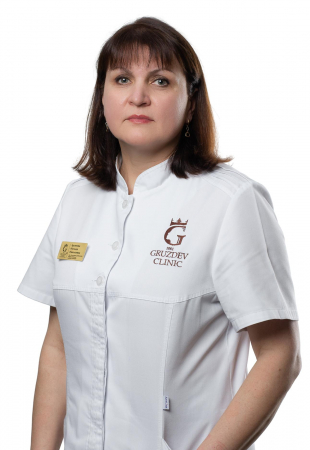
Head of the phlebological department of the clinic Dr. Gruzdev. Vascular surgeon, phlebologist of the highest category. 26 years of experience in this field. Member of the Russian Association of Phlebologists.
Why it hurts
The ankle joint is a combination of three bones – the fibula, tibia and talus. They are all connected to each other by tendons. There are many muscles around them that are responsible for flexing the sole of the foot. If there is a mechanical or degenerative disorder in this structure, pain occurs.
The most common causes of ankle pain are:
- arthrosis of the ankle;
- Osteoarthritis due to partial or complete dislocation;
- Gout;
- tendonitis;
- tunnel syndrome;
- fracture of the heel bone;
- anatomical abnormalities of the joint.
People with a sedentary lifestyle are most at risk of ankle diseases. The ligaments and muscles become loose and can no longer move, resulting in sprains, strains and fractures. Overweight people, flat feet, the elderly and athletes are also at risk.
Osteoarthritis is not the only possible cause of ankle pain
How to find out what the cause is
The diagnosis should be made by a doctor. So if you have pain and discomfort in your foot, you should not hesitate to see a specialist. But you can also assess the symptoms yourself at an early stage:
- Under arthrosis In osteoarthritis, the inflammation occurs suddenly without any trigger, such as an injury. The pain usually occurs at night and goes away when walking.
- In cases of. Ankle fracture The bony structures of the ankle are also injured. You notice swelling and feel pain when you even step on your foot.
- At tunnel syndrome Blood vessels and nerve roots are compressed (e.g. in diabetes, trauma, osteoarthritis). There may be severe swelling and cooling of the limb, followed by a local increase in temperature.
- In case of tendonitis The tendons become inflamed and swollen. Pain occurs when the leg is put under strain. If left untreated, there is a risk of infection and rupture of the tendon fibers.
- In the gout Severe pain usually occurs during sleep. The pain is sharp, spreads throughout the foot and radiates to the big toe. Apart from the pain syndrome, gout and salt deposits are not osteoarthritis.
- If You suffer a fracture of the heel bone You will notice extensive swelling, bruising, pain in the foot, and limited mobility. This problem is common in runners and can lead to chronic pain syndrome.
- If partial or complete dislocation The ankle thickens and the heel turns inward. The joint becomes deformed and causes severe swelling and long-term pain.
Unlike traumatic problems, osteoarthritis does not have such pronounced symptoms. When the cartilage degenerates, the ankle joint becomes painful and its mobility is somewhat limited. The symptoms are often vague, so the affected person does not immediately consult an orthopedist, but instead experiments with gels, ointments, local remedies and folk remedies and wastes valuable time.
Specificity of diagnosis
If walking becomes difficult, the legs hurt or become numb, the doctor not only examines the patient, but also necessarily sends him for further examinations to clarify the diagnosis and identify possible complications.
X-rays, as well as MRI and CT scans, reveal specific changes in the anatomy of the limbs: the appearance of osteophytes, the narrowing of the joint space, the thinning of the cartilage and the presence of fractures or breaks. Vascular ultrasound is used to diagnose varicose veins and other vascular diseases. Studies of synovial fluid and blood help to determine the nature of the inflammatory process and other facts important for drawing up a treatment plan.
Treatment of foot pain
Most pathologies that cause foot pain have a similar treatment plan. This usually includes the following:
- A healthy diet;
- Limiting the load on the limbs;
- taking medications (antibiotics for infectious diseases, anti-inflammatory drugs, muscle relaxants, cartilage protectants and others); and
- wearing orthopedic aids;
- Physical therapy;
- physical therapy after recovery;
- Massage;
- manual therapy;
- and other methods.
Physiotherapy improves local immunity, eliminates pain and swelling, prevents inflammation, improves blood circulation and accelerates tissue regeneration.
Orthopedic supports (e.g. kneecaps or sticks) reduce the load on the limbs. This relieves the muscles and allows the cartilage to regenerate more quickly.
Exercise therapy increases muscle endurance and strength, restores limb mobility and prevents the development of complications.
During remission, you should continue to exercise, eat a healthy diet, and try to get enough rest. These measures will keep your legs healthy and prevent the disease from recurring.
We specialize in the treatment of the musculoskeletal system, even in severe stages. For over 10 years we have helped thousands of patients avoid surgery!
Our doctors
It is a strong team of experts teaching at the faculty of the Russian Peoples' Friendship University. We are a clinical base for leading universities and train the best doctors in Moscow and unique specialists in Russia and abroad.
norms
Our experts and lecturers, together with leading Israeli specialists, have developed unique treatment protocols based on the recognized medical standards of the Russian Ministry of Health.
Read more:- Which doctor do you go to if you have joint problems?.
- The leg of a healthy person.
- Calf muscle cramps when walking.
- Hip Amputation Surgery Code.
- Does it make sense to walk in heels?.
- The structure of the human foot and diseases.
- parts of the human leg.
- At what age do girls' legs grow?.
